Happy new year guys! If you’re looking for an affordable way to track your new year’s fitness goals for 2021—or you’re thinking of a way to spend your upcoming ang baos, this might be it. We recently released our smartwatch buyer’s guide for 2020, and we also promised more guides in the coming weeks as part of a series covering the best wearables you can buy in Malaysia for 2020/21.
As we mentioned in the first guide in the series, smart wearables can be roughly divided into a couple of segments: smartwatches, pseudo-smartwatches, enthusiast-centric sports watches, and (usually) the most affordable option: fitness bands. Today, we’ll be talking about the affordable fitness bands you can buy in right now.
To me, fitness bands are the entry point into the wearable market. Despite the affordable price tags, they still offer a serious amount of functionality for such small, affordable devices. You might be looking for something within a tight budget, or maybe you like the idea of a lightweight, small wearable that will do (a lot) more than tell you the time.
With that in mind, this is SoyaCincau’s best fitness bands to buy in 2021! To make things easy for you, links to official/trusted stores will be provided in each individual listing, and there will also be a comparison table at the end of the guide to give you a side-by-side glance at the most important specs.
At the end of the guide, if you still can’t make up your mind, click on the Editor’s Choice section, where we’ll be providing SoyaCincau’s top choices out of the list.
Ready? Start by clicking a link below.
[nextpage title=”Fitbit Charge 4″]
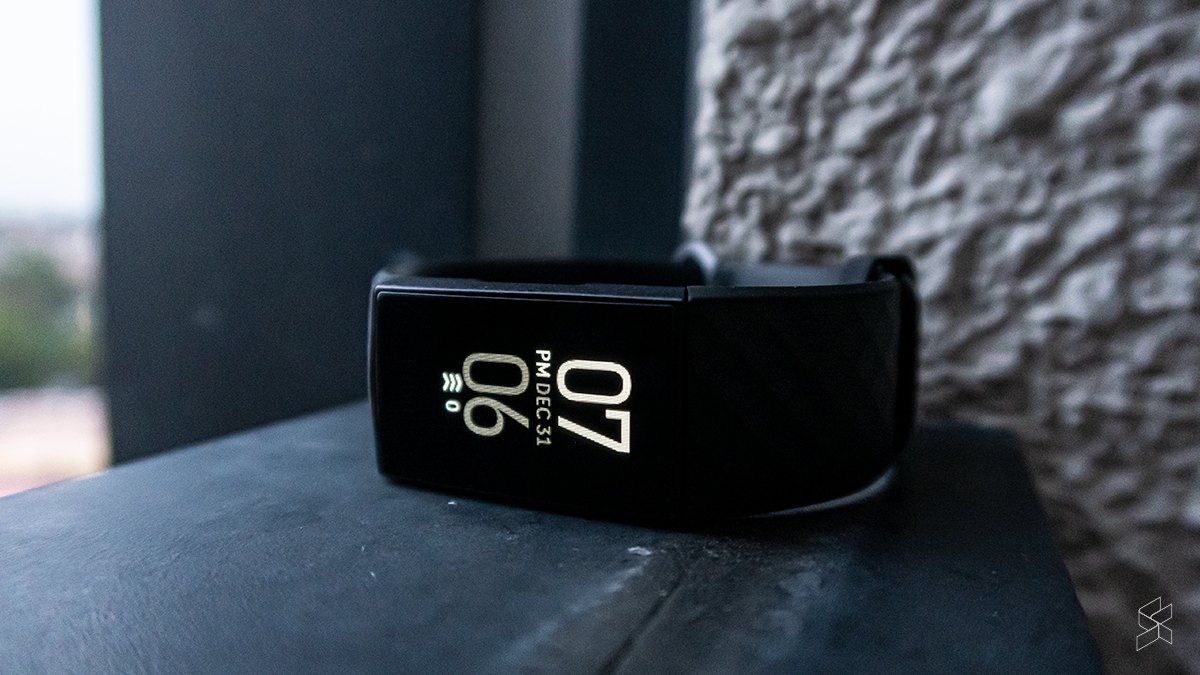
Fitbit was one of the early pioneers of fitness bands back in the day, and they’ve continued to improve the Charge series in the last couple of years or so. The Fitbit Charge 4 is the most expensive option in this list, but it also has a spec sheet to match. For one thing, you’re getting built-in GPS on the Charge 4, while there is also an SpO2 sensor to measure the saturation of oxygen in your blood.
Additionally, Fitbit also offers a wide range of insights and analytics, including the new Active Zone Minutes feature. This basically uses personalised heart rate zones to track and count the minutes that you are active—all in the name of promoting (at least) 30 minutes a day of activity.
Sleep tracking is also available, while you’ll be able to use the Charge 4 to control Spotify playlists. However, do note that you will not be able to use the Charge 4 for local/offline music playback; that’s a feature usually reserved for smartwatches. Fitbit Pay is technically supported, but for now, the contactless payment solution is still not available in Malaysia.
Other features are pretty much standard. Water resistance at up to 50m, up to seven days of battery life, and basic smart functionality such as notifications and quick previews. You can also choose to go for Fitbit’s Premium service, which costs RM39/month or RM335/year for more advanced insights and tools.
Finally, it’s worth noting that the Fitbit Charge 4 uses a touchscreen greyscale OLED display, which is rather disappointing. Most, if not all fitness bands use colour displays nowadays, and they’re all sold at significantly lower prices to boot. Still, at least you’re getting GPS, so you’ll be able to track your runs or hikes.
To find out more, click here.
Fitbit Charge 4 – RM698
Where to buy:
Online: Lazada, Shopee
Store: Authorised Fitbit retailers
[nextpage title=”Fitbit Inspire 2″]

The Fitbit Inspire 2 is the company’s more “affordable” tracker, and a couple of compromises have been made compared to the premium Charge 4. For one thing, there is no built-in GPS, while you won’t be able to measure the saturation of oxygen in your blood (SpO2) on the Inspire 2.
However, you still get Fitbit’s customary range of insights and analytics, including Active Zone Minutes and 24/7 heart rate tracking. For the Inspire 2, Fitbit is also throwing in a one-year free trial to its Premium service, which means that you’ll have most, if not all of the advanced metrics you could ask for. Once the year is up, you’ll need to pay RM39/month or RM335/year for a Premium subscription if you want to continue.
The Inspire 2 is also Fitbit’s king of battery life, with an improved 10 days of battery life promised by the company (versus seven days on the Charge 4). Meanwhile, it also uses a greyscale OLED—again, this is rather disappointing on a fitness band in 2021—so you’ll need to weigh the importance of a colour display into your decision at the end of the day.
To find out more, click here.
Fitbit Inspire 2 – RM498
Where to buy:
Online: Lazada, Shopee
Store: Authorised Fitbit retailers
[nextpage title=”Amazfit Band 5″]
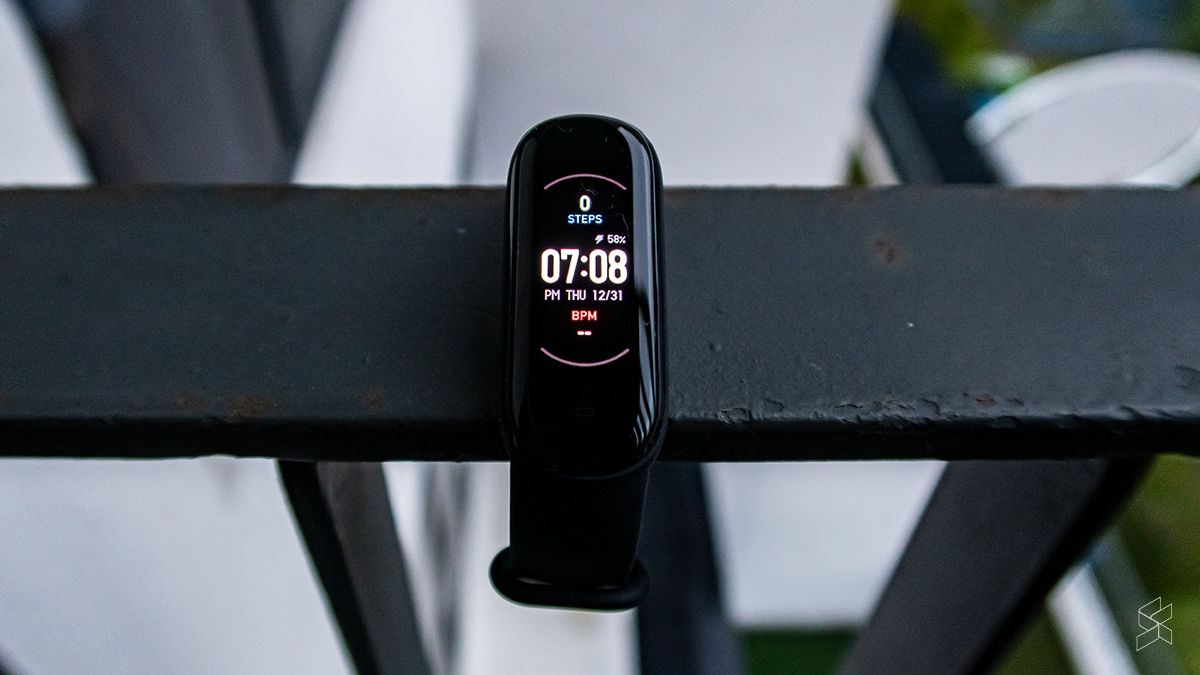
The Amazfit Band 5 looks really similar to the plethora of fitness bands out there today, and looks rather generic as a result. Apparently, this is because Amazfit’s wearables are developed by Huami—which is also the same company that has a hand in Xiaomi’s fitness trackers.
Beyond that tidbit, the Amazfit Band 5 comes with a 1.1″ colour AMOLED display, while the tracker is rated for up to 15 days of usage on a single charge. Water resistance of 5ATM means that the Amazfit Band 5 should be able to handle submersion of up to 50m, with swim tracking available as one of the 11 sports modes supported. In fact, sports modes are pretty varied, including tracking for rowing, yoga, and even rope skipping.
Another strength that the band has is the ability to measure your blood oxygen by using the equipped SpO2 sensor. You’ll also have access to Amazon Alexa as a voice assistant—something that is not supported on Fitbit’s trackers. Overall, the Amazfit Band 5 offers a lot for what it’s priced at, but misses out on one key feature: built-in GPS.
To find out more, click here.
Amazfit Band 5 – RM165
Where to buy:
Online: Lazada, Shopee
Store: Authorised Amazfit retailers
[nextpage title=”Samsung Galaxy Fit 2″]
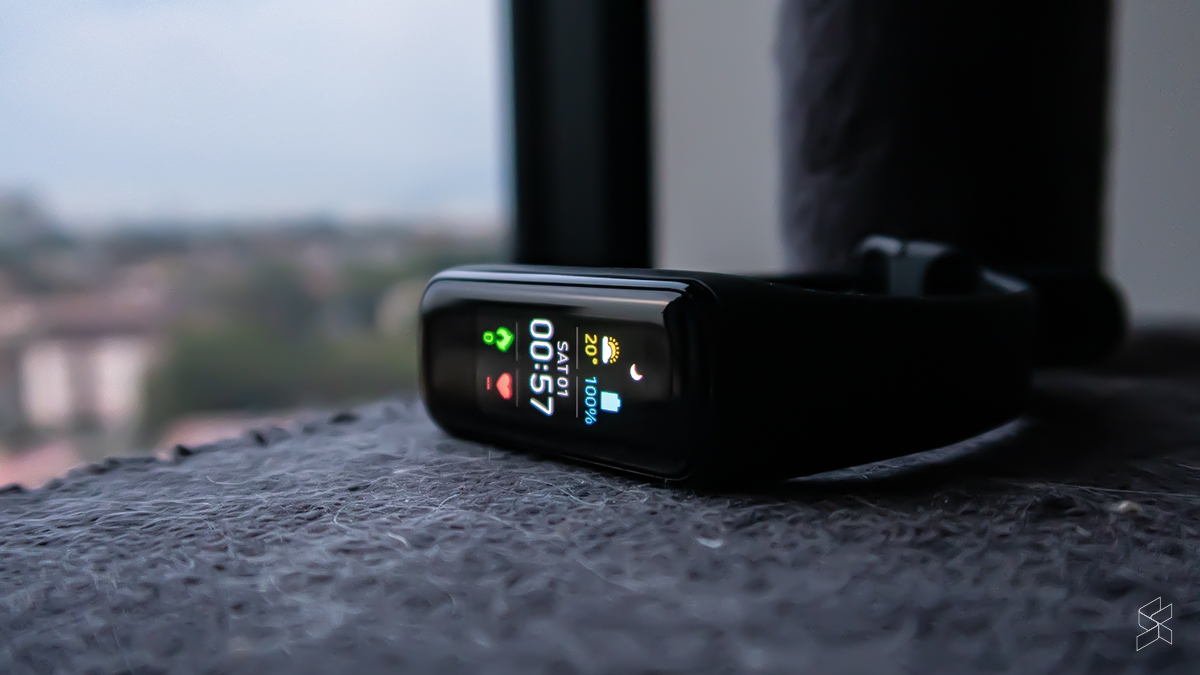
The Samsung Galaxy Fit 2 is the successor to the original Galaxy Fit—but this time, Samsung has made the logical decision to reduce the price of its latest fitness tracker. For some context, the Galaxy Fit was launched at RM369, with the monochromatic, non-touchscreen Galaxy Fit-e priced at RM139.
Now, the Galaxy Fit 2 is available at “just” RM179, which tallies a lot more with the market price of fitness bands in general. Samsung has also equipped the tracker with a larger display—a 1.1″ colour AMOLED display—while going for a “3D” glass design. Battery life has also been improved by a lot, with 21 days of usage promised on a single charge.
This would make the Galaxy Fit 2 one of the battery champions on this list, but you should note that the 21-day rating only works if heart rate tracking and the auto workout feature are turned off. For typical usage, you should expect something closer to 15 days on a single charge, which is still pretty impressive.
The rest of the features are on-par for a fitness band in the current market. The tracker will measure metrics like calories burned, distance travelled, steps, and of course, heart rate monitoring, You’ll also be able to take the Galaxy Fit 2 on swims, with 5ATM of water resistance meaning that the tracker should be able to withstand depths of up to 50m.
The only things missing here are an SpO2 sensor (blood oxygen), as well as built-in GPS.
To find out more, click here.
Samsung Galaxy Fit 2 – RM179
Where to buy:
Online: Lazada, Shopee
Store: Authorised Samsung retailers
[nextpage title=”Mi Smart Band 5″]

Xiaomi’s Mi Band series makes up some of the best fitness bands in the market, year-on-year. I remember reviewing the Mi Band 4 over a year ago, and finding it to be one of the best fitness trackers you could get within a budget—but does the Mi Band 5 continue that legacy?
Well, sorta. The Mi Band 5 is more of an incremental upgrade over the Mi Band 4, with a larger 1.1″ AMOLED display and a magnetic charger being one of the significant improvements over its predecessor. Meanwhile, Xiaomi has also included more health-related features on its latest fitness band, including sleep monitoring (which are supposed to help with sporadic/irregular sleep patterns), and even a built-in PAI activity index.
Other unique health tracking features include a menstrual cycle prediction function (which works with a vibration alert), and stress monitoring. Battery life is rated the same at 14 days, while 5ATM water resistance means that you’ll be able to take this on swims at up to 50m. There’s also an NFC version, although the official version for the global market does not have NFC, or support for the XiaoiAi voice assistant.
Xiaomi has also jumped aboard the blood oxygen bandwagon and equipped the Mi Smart Band 5 with an SpO2 sensor, but the bad news is that this is only available on the China-only NFC version, not the global Mi Smart Band 5 officially sold in Malaysia.
To find out more, click here.
Xiaomi Mi Smart Band 5 – RM169
Where to buy:
Online: Lazada, Shopee
Store: Authorised Xiaomi retailers
[nextpage title=”Honor Band 5″]

The Honor Band 5 isn’t really the most current fitness tracker you can get right now, having been launched mid-2019. However, the Honor Band 6 has only been announced in China for now—although that looks a lot more like a pseudo-smartwatch, rather than a fitness tracker.
In any case, the Honor Band 5 is actually available at a significantly discounted price of RM109 on Lazada (RRP: RM129) right now. This makes it the most affordable option within this buyer’s guide, so if you’re looking for something on a really tight budget, this might be the one for you.
Despite its age, the Honor Band 5 was one of the first fitness trackers to feature SpO2 monitoring. Not available at launch, Honor pushed the feature to the fitness band via an OTA update in Malaysia awhile back, so you’ll be able to measure your blood oxygen on the Honor Band 5.
There’s no built-in GPS (in this buyer’s guide, only the Fitbit Charge 4 has GPS), but the rest of the Honor Band 5’s features are still up to par. That’s a 0.95″ AMOLED touchscreen, 24-hour heart rate monitoring, and even sleep tracking. Meanwhile, the band is rated for 50m of submersion, along with a swim tracking feature in tandem.
Finally, battery life on a single charge is rated at up to 14 days—with TruSleep, TruSeen 3.0, and the raise-to-wake features disabled.
To find out more, click here.
Honor Band 5 – RM129 (discounted price: RM109 on Lazada)
Where to buy:
Online: Lazada, Shopee
Store: Authorised Honor retailers, Honor online store
[nextpage title=”Realme Band”]
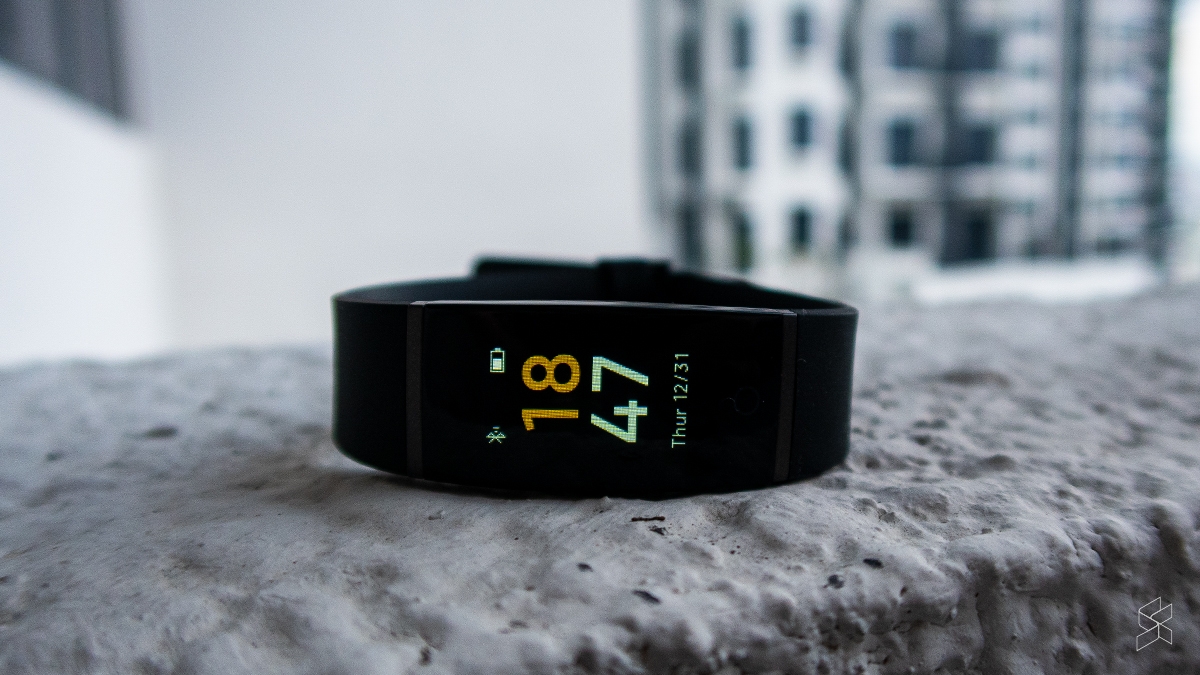
The Realme Band is one of the more affordable options in this list, with a price tag that undercuts some of its main rivals—including the Mi Smart Band 5. Specs include a 0.96″ colour display, IP68 dust and water resistance, and of course, a built-in heart rate sensor.
Battery life is pretty good, too, with Realme promising up to 10 days on a single charge. However, the most unique thing about the Realme Band is that you won’t need to use a separate USB cable to charge the device. Instead, the fitness tracker has an integrated USB connector, so all you need to do is to detach the wrist band, and directly plug the main module into a USB-A port.
Finally, the Realme Band uses a TFT display compared to the OLED/AMOLED screens on most of the other options in this buyer’s guide. While it is true that fitness bands don’t necessarily need the best displays (look at the Fitbit Charge 4’s greyscale screen), I found the display on the Realme Band to be fairly dull, and washed out.
Compared to the more vibrant displays on OLED displays such as the Mi Smart Band 5’s, this is rather disappointing.
To find out more, click here.
Realme Band – RM129
Where to buy:
Online: Lazada, Shopee
Store: Authorised Realme retailers
[nextpage title=”Huawei Band 4″]
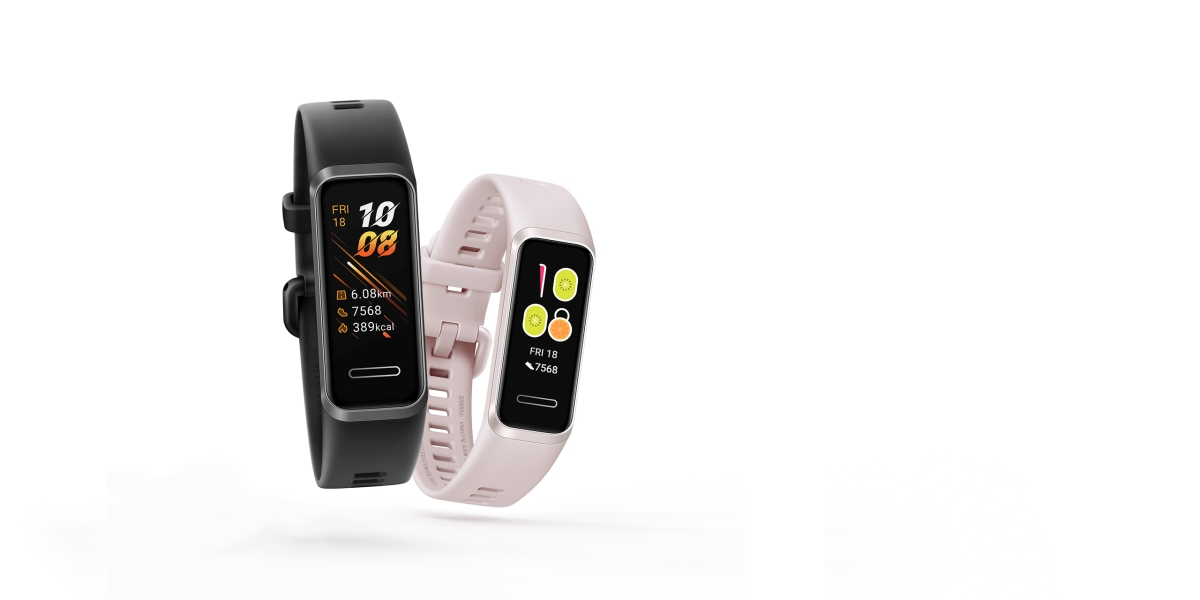
The final entrant in this list is the Huawei Band 4, which offers Huawei’s range of health metrics—including TruSleep 2.0, and a smart heart rate tracking feature that provides reminders if your heart rate exceeds the maximum average. Meanwhile, the Huawei Band 4 also uses the same charging mechanism as the Realme Band, which means that you can use the integrated USB-A connector to charge the device, no cables required.
SpO2 tracking is also supported, so you’ll be able to use your blood oxygen levels to get a better overall idea of your health. Unfortunately—just like most fitness bands in the market today—this does not come with built-in GPS. Instead, you’ll need to bring a paired smartphone (which will almost certainly have a GPS module) with you if you plan to track your runs or hikes.
Finally, this also comes with a TFT display, so you’ll need to weigh that into your decision. Huawei also promises up to nine days of battery life, provided that you disable a couple of services: TruSleep, smart heart rate monitoring, and raise-to-wake.
To find out more, click here.
Huawei Band 4 – RM139
Where to buy:
Online: Lazada, Shopee
Store: Authorised Huawei retailers, Huawei online store
[nextpage title=”Editor’s choice + comparison table”]
And there we have it! If you’re still struggling to come to a final decision, you’ve come to the right place. For a side-by-side comparison of some key specs and information of the fitness bands in this guide, click on the comparison table above. And if you’re still stuck, I’ve also compiled a list of devices that are the best of the lot—in my humble opinion.
This is the editor’s choice:
#1 Amazfit Band 5
The Amazfit Band 5 comes in at the top of the list, and a big portion of the credit has to go to Huami—the same company that makes the Mi Smart Band 5. Huami actually owns Amazfit, but the company also has a manufacturing partnership with Xiaomi, which explains the similarities between both devices.
We’ll get to Xiaomi’s fitness tracker in a bit, but it’s clear here that both devices have near-identical specs, while offering pretty much the same user-friendly interface. However, while Xiaomi has reserved SpO2 functionality for the China variant of the Mi Smart Band 5, the Amazfit Band 5 comes with the ability to measure your blood oxygen.
This, coupled with support for Amazon Alexa, gives it a slight edge over Xiaomi’s fitness band, which has arguably been the market leader over the past few years or so.
Plus, it comes at a slightly cheaper price than the Mi Smart Band 5. If you’re looking for a do-it-all fitness band on a budget, this is probably the best option you can get right now.
To find out more, click here.
Amazfit Band 5 – RM165
Where to buy:
Online: Lazada, Shopee
Store: Authorised Amazfit retailers
#2 Mi Smart Band 5

Rather predictably, the Mi Smart Band 5 comes in next on the podium. As I’ve mentioned above, Xiaomi’s fitness band retains almost every feature that you can find on the Amazfit Band 5—but it misses out on an SpO2 sensor. Beyond that, you get the same familiar, easy-to-use interface that previous Mi Band users should be accustomed to, and its vibrant display is one of the best that you can find on a fitness band.
Other features that the global version of the Mi Smart Band 5 misses out on (compared to the China variant) is NFC, and support for Xiaomi’s own XiaoAi voice assistant. Battery life remains one of the best out there today—just like its predecessor—and they’ve corrected one of the most annoying things about the Mi Band 4: the finnicky charging mechanism.
Now, you get a magnetic charger on the Mi Smart Band 5, which looks and feels a lot more premium than the Mi Band 4’s irritating clip-on charger.
To find out more, click here.
Xiaomi Mi Smart Band 5 – RM169
Where to buy:
Online: Lazada, Shopee
Store: Authorised Xiaomi retailers
#3 Fitbit Charge 4

This last podium place was a difficult decision for me to make. On the one hand, the Fitbit Charge 4 is—by some margin—the costliest fitness band here (and probably in the market). But on the other, Fitbit’s flagship tracker is the only device here that comes with built-in GPS, which is a pretty big deal in this compact form-factor.
What this means is that you’ll be able to take the Charge 4 out with you on runs as a standalone device (no phones needed), and the fitness band will be able to track your location data—which is very important for runners and hikers (among others). Meanwhile, Fitbit’s range of health metrics and the community aspect of the company’s Premium service also count in the Charge 4’s favour, and you get pretty much every sensor that you need on a fitness tracker.
The most disappointing thing for me, besides the price tag, is the display on the Charge 4. Greyscale, in 2021? As I’ve said earlier, displays aren’t exactly make-or-break deals on fitness bands (unlike smartwatches), but as the only device here to have a black-and-white display… it’s shocking that it also comes with the highest price tag.
To find out more, click here.
Fitbit Charge 4 – RM698
Where to buy:
Online: Lazada, Shopee
Store: Authorised Fitbit retailers
And that rounds things off for this buyer’s guide! As mentioned in the intro page, this is one part of a series of buyer’s guides that we’re working on—we’ve covered mainstream smartwatches and fitness bands (in this guide), and in the coming weeks, we’ll be publishing buyer’s guides for psuedo-smartwatches and specialist sports watches. And of course, if you think I missed out on a worthy contender, please feel free to share your thoughts in the comments section below.








